A Sunflower Story
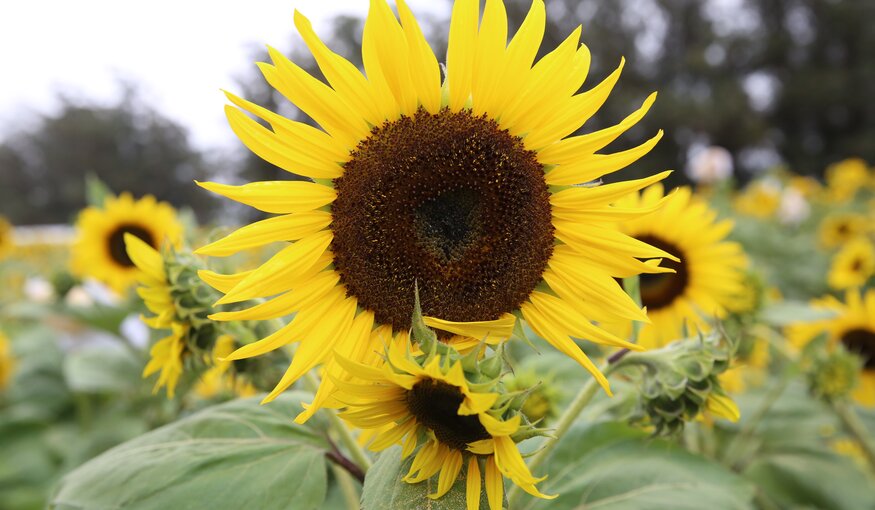
11 June 2020
Early this year, the Crop Trust’s very own Luis Salazar visited Argentina, where our Crop Wild Relatives Project pre-breeding partners from the National Agricultural Technology Institute (INTA in the Spanish acronym) are evaluating hundreds of new crosses between wild and domesticated sunflowers, searching for resistance against three of the most harmful diseases affecting global production. The slideshow below gives you a taste of his trip deep into the Argentinian pampas.
A Brief History
Roses aside, the sunflower’s seed-filled head encircled by a thick ring of yellow petals is probably the most recognizable flower in the world. In the late 19th century, it was made famous by the Dutch painter Vincent van Gogh, who painted his now iconic sunflower masterpieces in the south of France. But make no mistake: the sunflower is not a European plant.
It is originally from the Americas. In fact, archaeologists estimate that sunflowers were being cultivated by native Americans roughly 10,000 years ago, even before staples like corn, squash or beans were domesticated.
The Spanish brought the sunflower to Europe around 1510. It later moved on to Russia thanks to Tsar Peter the Great himself, who first saw the plant in The Netherlands on one of the fact-finding trips he took in his effort to modernize his country. Sunflowers gained popularity quickly in Russia, mostly due to the fact that sunflower seed oil could be consumed during Lent, unlike other oils that the Orthodox Church banned during that period.
Though used in floral arrangements everywhere, the sunflower is grown mostly for the oil in its seeds. Today, Russia is the largest producer. But you can find the crop in more than 70 countries around the world - from Uganda to China to Argentina.
Sunflowers in Argentina
Sunflower made its way back across the Atlantic to Argentina in the 19th century. In 1881, in response to anti-Jewish pogroms in Russia, President Julio Argentino Roca promoted the immigration of Jews to Argentina. And they brought their sunflower seeds, which thrived in their new country.
Until 2002, the sunflower was a crop of enormous importance in Argentina. At the time, about 18% of the world’s sunflower production came from there. More recently, however, this figure has dropped to 7%. Though there is no single cause for this huge decline in production, everybody we talked to during our visit to Argentina stated that the most important cause was that farmers preferred soybean.
In a good year, soybean brings in a lot more money. As a result, sunflower production has gone down, and been forced to relocate to poorer soils and new regions in the country where it had not been grown before.
In terms of performance, sunflower is about as sure a bet as one can make. It is genetically well-equipped to withstand drought and salinity, two of the most important abiotic stresses that affect its productivity. It grows in very diverse conditions – from desert dunes to salt marshes. Even in a bad year, when there is drought or disease, sunflower farmers know they will be able to will make a decent return on their investment. So it hangs on, despite everything.
But it clearly needs a helping hand. That’s why the Crop Wild Relatives Project (CWR) is supporting a multi-country effort that is exploring the potential of the sunflower’s wild cousins.
This program is being led by our partners at the University of British Columbia (UBC) in Canada. They crossed 28 wild sunflowers with an elite domesticated sunflower (called HA89), resulting in 400 new hybrid offspring. In India, our partners at the Indian Institute of Oilseeds (IIOR) are evaluating the tolerance of these new lines to heat. In Uganda, trials are focusing on their resistance to low nutrient stress. Meanwhile, SOLTIS, a French seed company, is analyzing their oil content.
Initial results are more than promising. “An unexpected but welcomed result is that some of these new pre-bred lines have even higher oil content than the HA89,” says Emily Warschefsky, a postdoctoral researcher working with renowned botanist Loren Rieseberg at UBC.
In a truly international collaboration, the United States Department of Agriculture (USDA) is responsible for seed multiplication, maintenance and distribution. In Argentina, INTA is carrying out evaluation trials for tolerance to various diseases, which remain the primary concern of producers and seed companies in the region.
On Location
In five days, we traveled 2,100 km, exploring the southern part of Buenos Aires Province and the north and north-eastern parts of Patagonia – two of Argentina’s three main sunflower producing regions.
During our expedition, we visited several trial sites where the INTA team is evaluating 222 pre-breeding lines. Their goal is to identify the ones that are resistant to three major diseases: Verticillium wilt, stem canker and downy mildew.
We also met producers, agribusiness leaders, breeders and researchers from national and international seed companies, and representatives from civil society organizations involved in the sunflower value chain. Emily Warschefsky joined us during those long, busy days, and shared with them the project’s philosophy, goals and most recent findings.
A special thanks goes out to Norma Paniego, Principal Investigator at INTA, who is also the national leader of the CWR sunflower pre-breeding project, and to Juan Montecchia, a postdoctoral student, who is leading the Verticillium trials. Their passion, knowledge and commitment was inspiring. Thank you too to all the INTA colleagues who welcomed us, for an unforgettable experience.
The trip reconfirmed the crucial role biodiversity plays – and will continue to play – in adapting our agriculture to new realities.
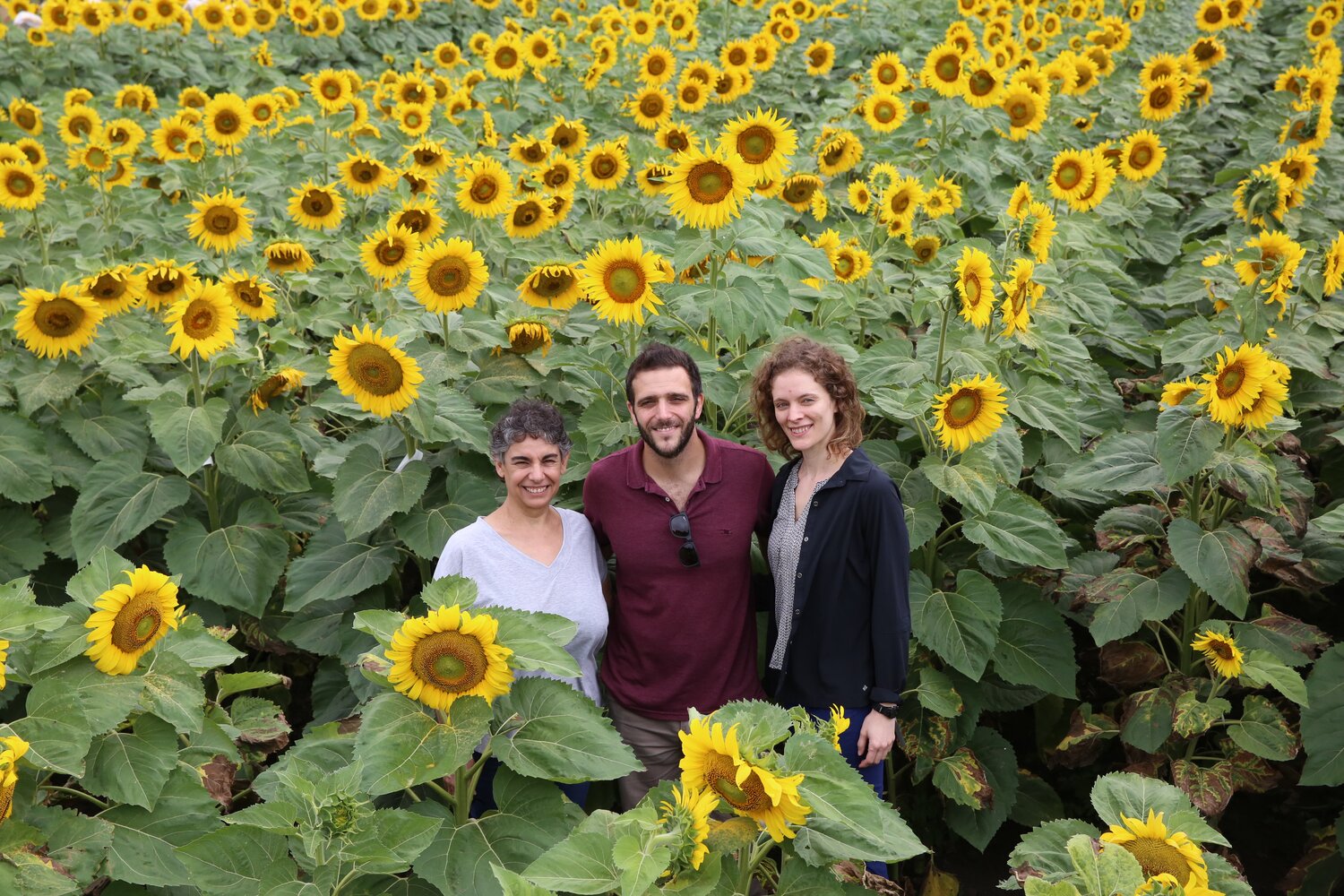
Day 1: We were welcomed by Dr. Ruth Heinz, Director of the INTA Research Center for Agricultural and Veterinarian Sciences (CICVyA), as well as several sunflower researchers, students, and technicians. Pictured here (from left to right) are: Norma Paniego, Principal Investigator, who is also the national leader of the Crop Wild Relatives sunflower pre-breeding project; Juan Montecchia, a postdoctoral student, who is leading the Verticillium trials; and Emily Warschefsky, a postdoctoral researcher and representative of UBC, the lead partner of this international pre-breeding effort.
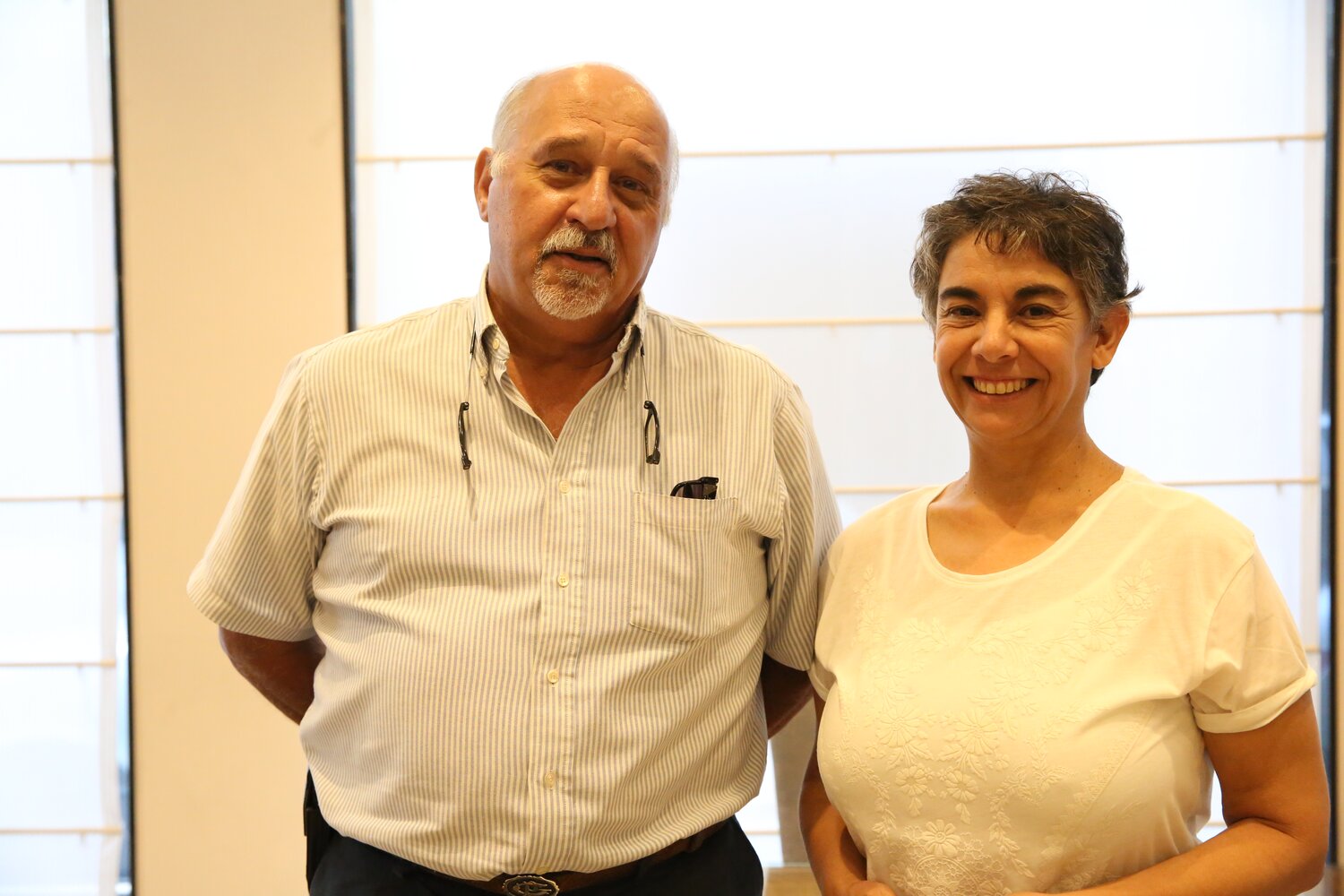
We ended the six-day visit to Argentina with Guillermo Pozzi Jáuregui, Technical Manager from the Argentinian Sunflower Association (ASAGIR), who gave us an overview of the current state of sunflower production in Argentina and the world. He highlighted the need for germplasm accessibility “to gain a competitive edge to meet the world’s demand for sunflower oil and seeds.”
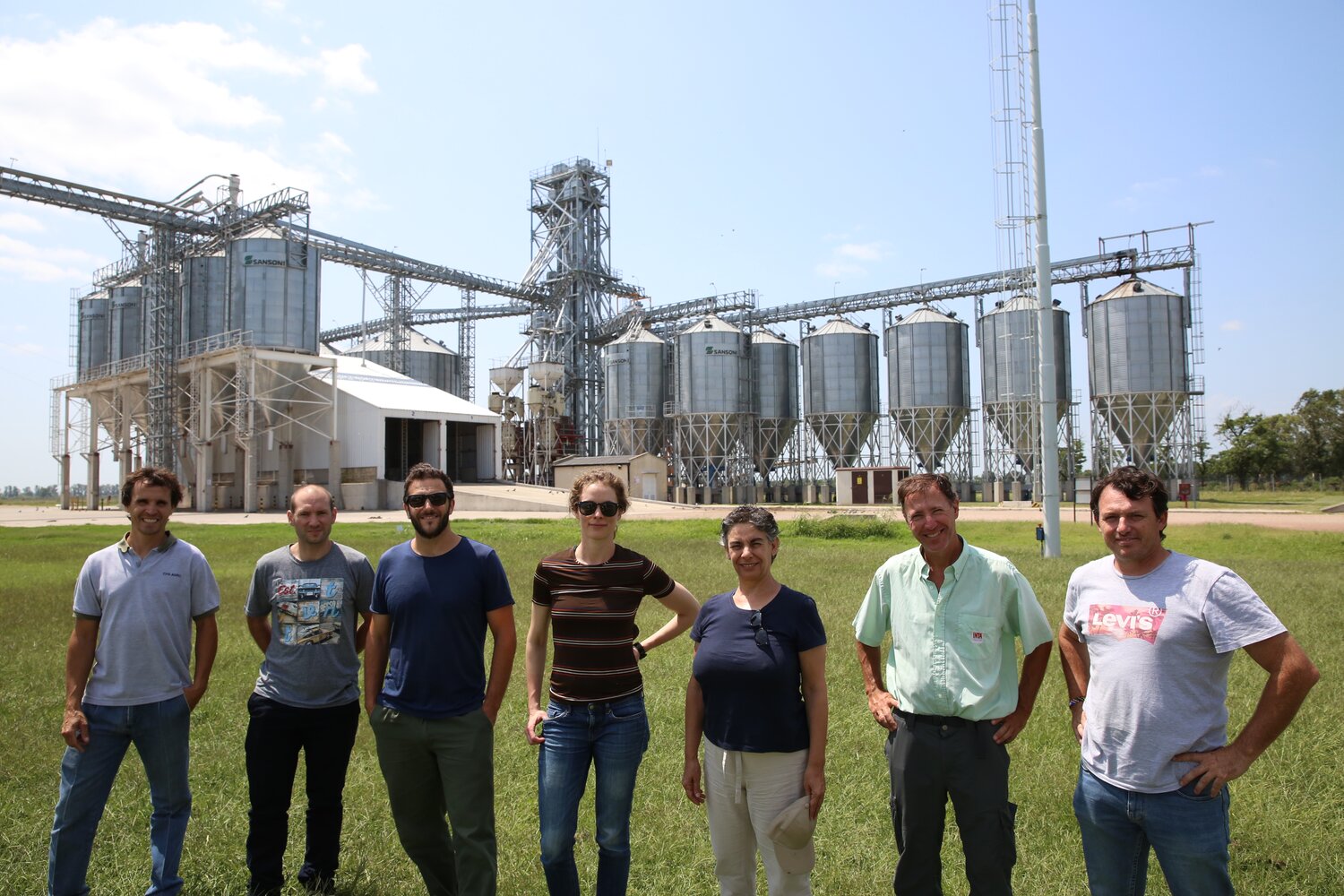
Day 5: Our Crop Wild Relatives pre-breeding partners INTA take us to Girasoles del Plata, an agribusiness located in Pehuajó, Buenos Aires Province. Roberto Carrera, Logistics and Process Manager (far left) gave us a detailed tour of their plant. Girasoles del Plata exports 90% of their products to all corners of the world, to bread-making and pastry industries. As Marcelo Verdinelli, Agricultural Liaison for Adecoagro Sur (far right) told us, they demand top quality, large seeds. For this, they work closely with confectionary sunflower producers.
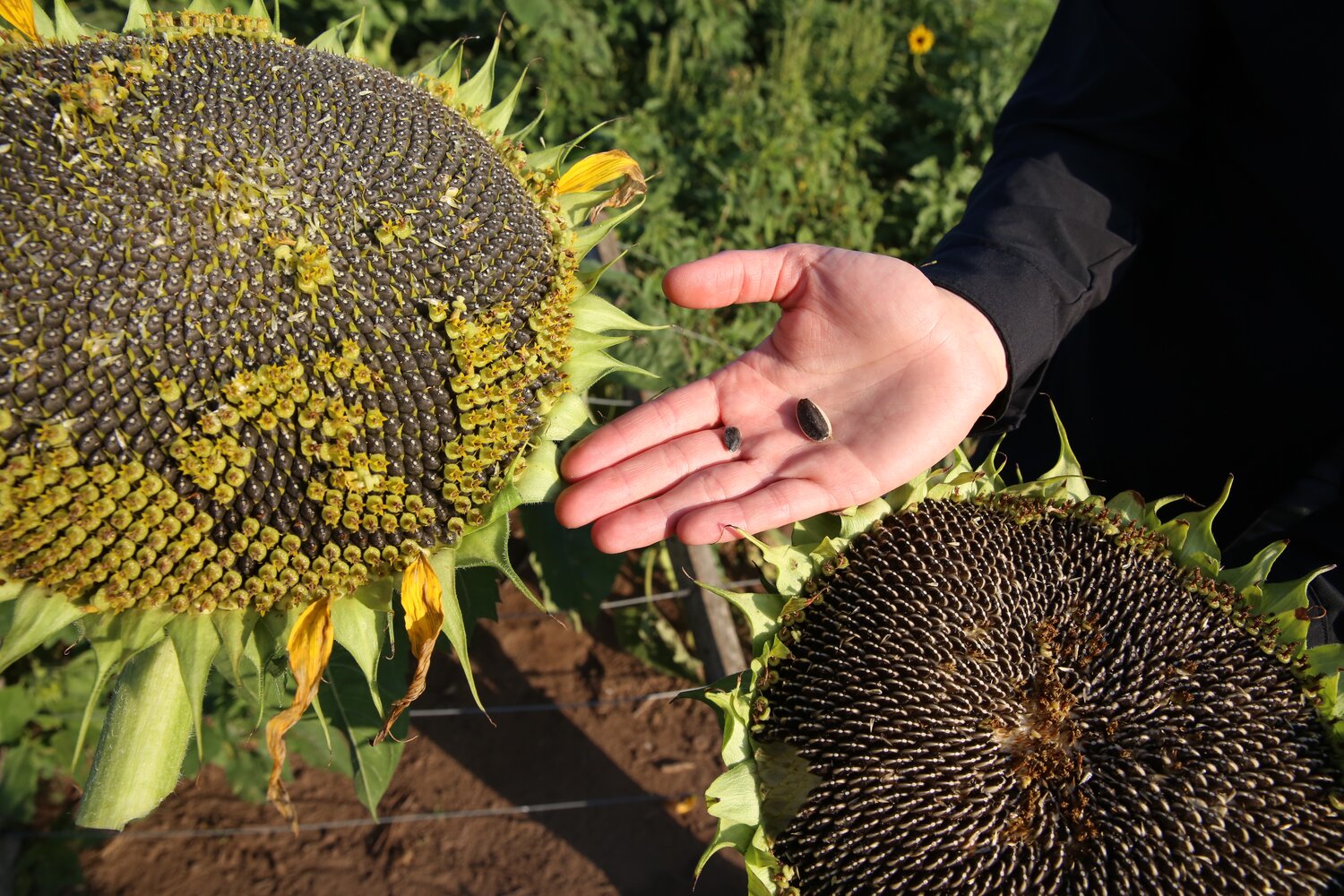
Sunflowers are mostly grown as an oilseed or a confectionary crop. Breeders develop varieties according to the demands of producers and markets. Case in point: as clearly seen in this image, the confectionary sunflower head (left) is larger, as are its seeds, when compared to the oilseed sunflower head (right), which, however, has more oil in its seeds.
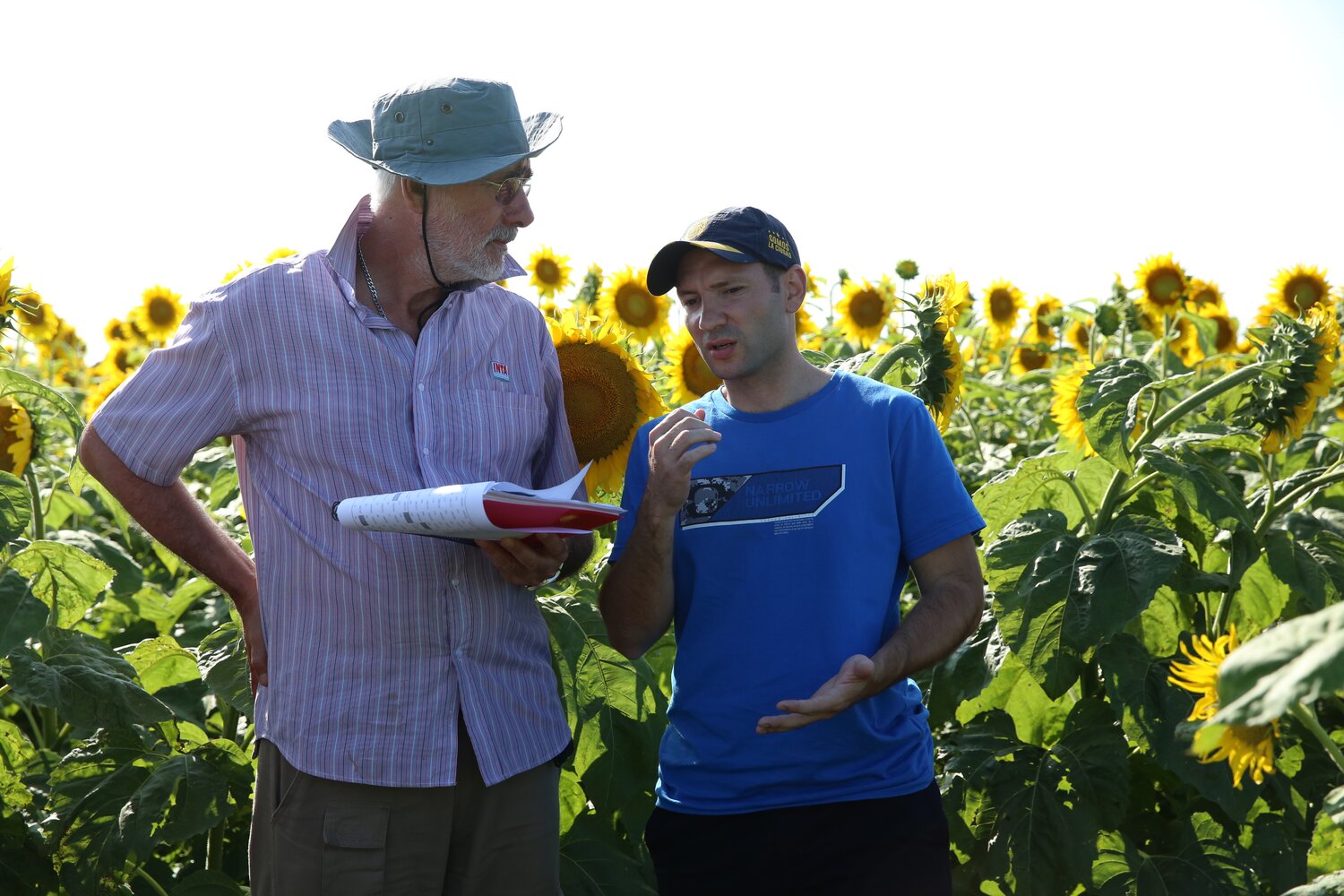
Day 4: In the afternoon, we visited a Crop Wild Relatives trial site near General Pico, where our INTA partners are evaluating the resistance of crosses between wild and elite sunflowers to stem canker. Pictured here, renowned INTA sunflower breeder Daniel Alvarez (left) talks with PhD candidate Denis Colombo (INTA Anguil-Conicet), who is studying the variability of causal agents of stem canker. Daniel is also responsible for INTA’s sunflower genebank.
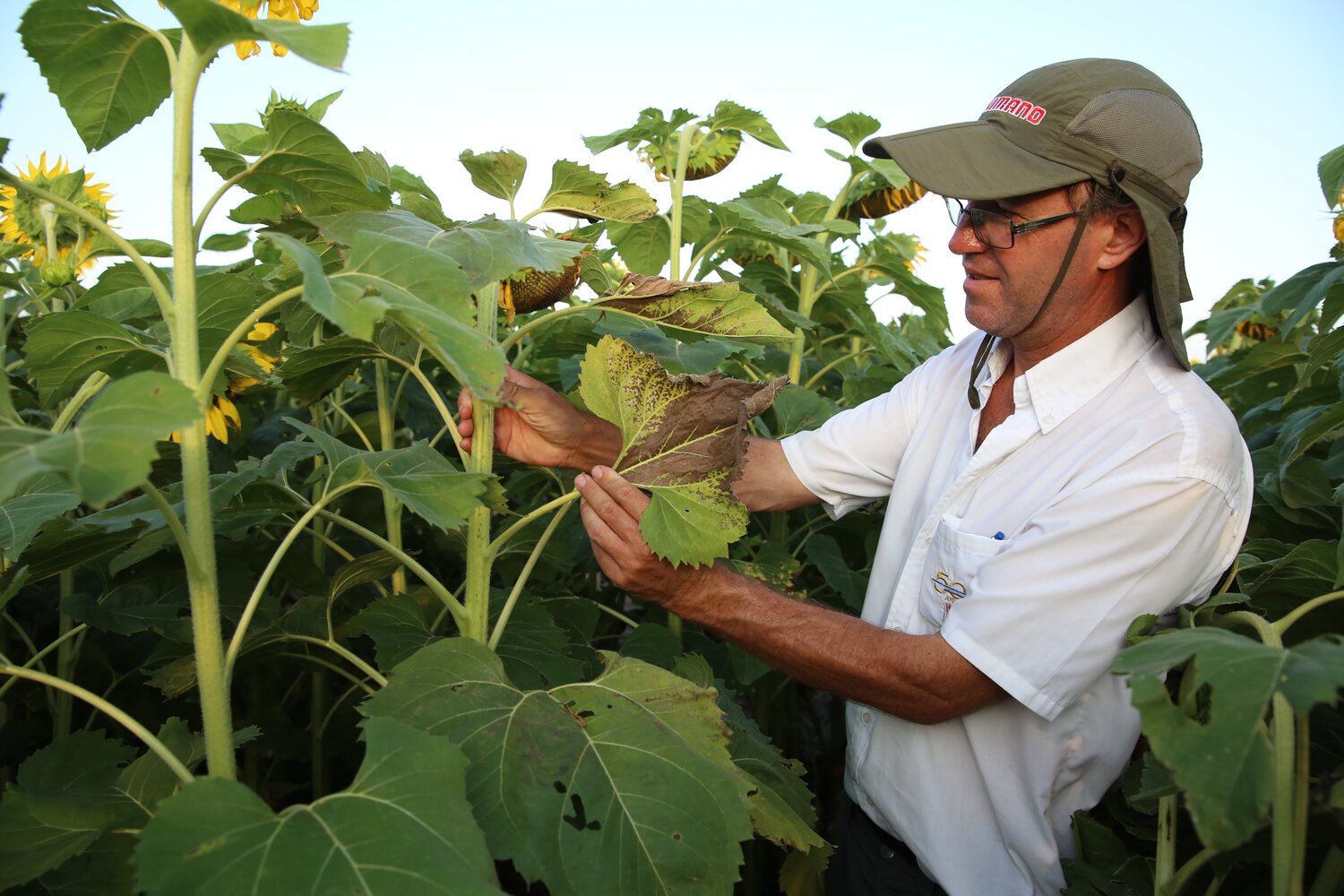
Day 4: In General Pico, La Pampa, we visited the Crop Wild Relatives trials, where our partners from INTA are evaluating new pre-breeding materials, searching for resistance to stem canker. Though present in Argentina since 1994, it wasn’t until 2016 that stem canker started affecting sunflower production. In this semi-arid region, losses of up to 45% yield and 15% of oil content have been estimated, says Andrés Corró Molas (pictured), Chief of INTA’s Rural Extension Office in General Pico.
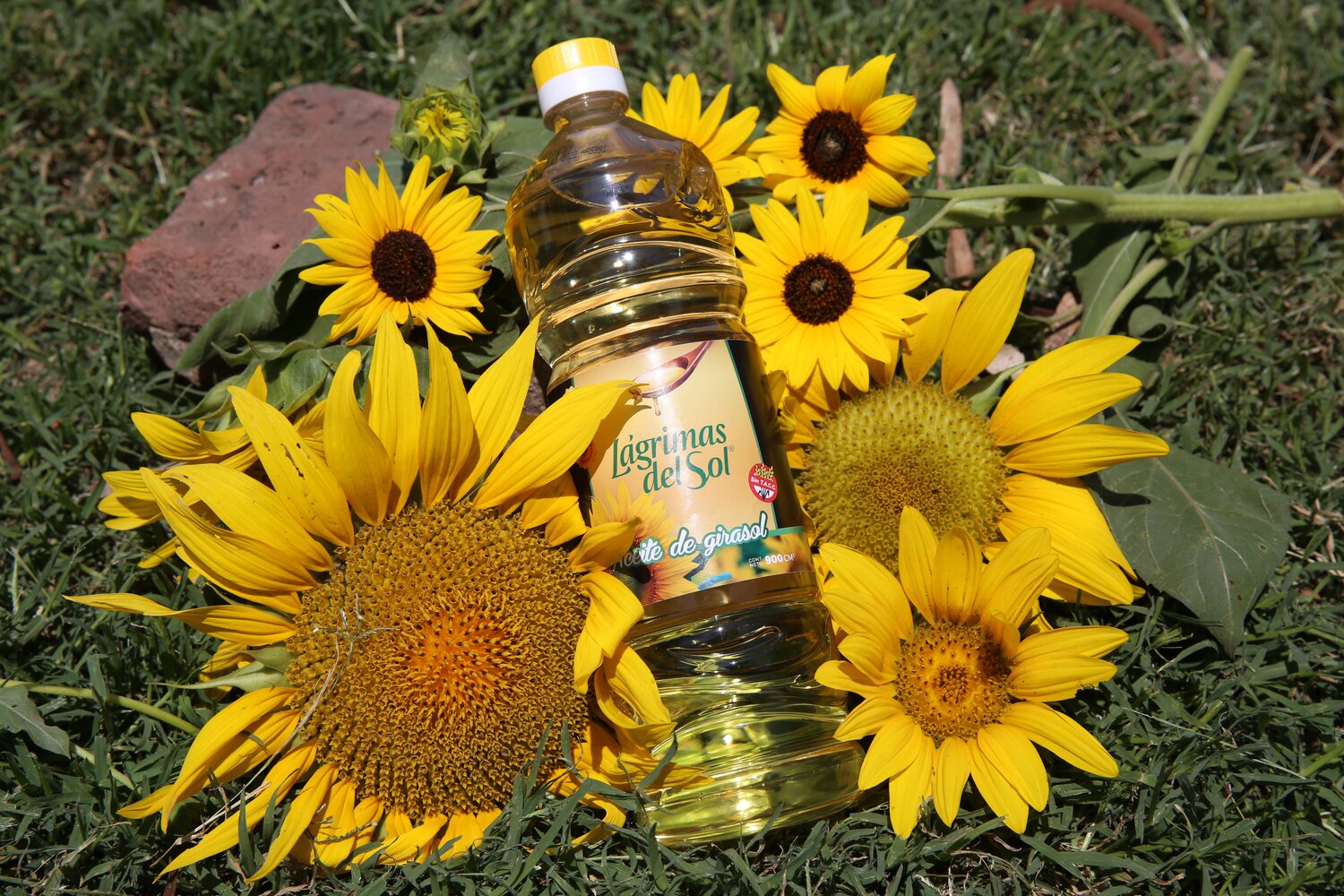
“Lágrimas de Sol” is one of the many sunflower-based products produced and sold by Gente de La Pampa. Sunflower oil is light in color and neutral in flavor; it can withstand high cooking temperatures, which makes it a good all-purpose oil. More importantly, it is low in saturated fat, and, thus, a heart-friendly option.
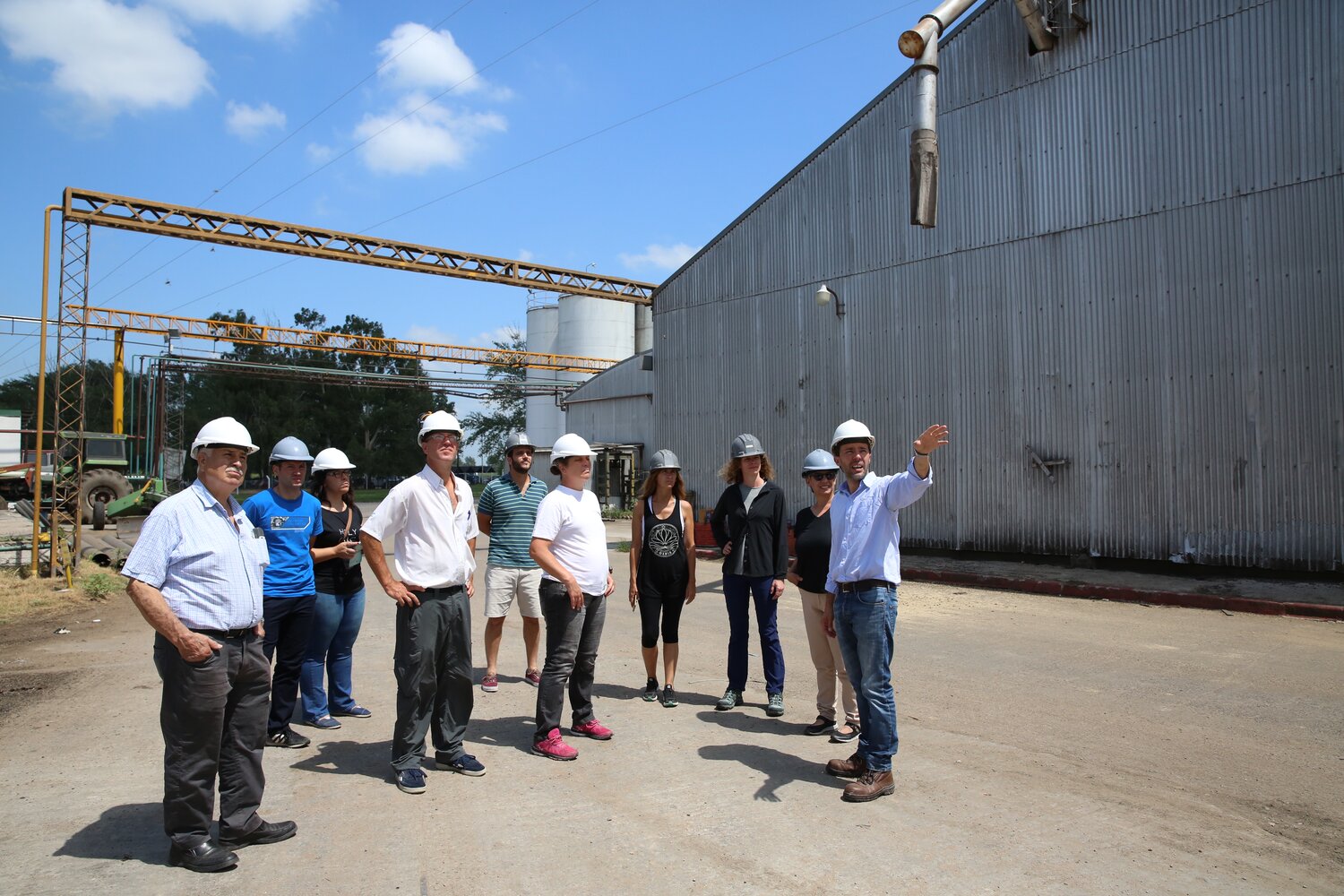
Day 4: Early in the morning, we visited Gente de la Pampa, a mid-sized agribusiness that produces sunflower-based products such as oil, mayonnaise, biofuels, and animal feed. Created in 1976, it continues to add value to La Pampa’s agriculture. We thank Federico Manasero, Industrial Plant Manager, Pablo Baliño, Animal Nutrition Manager, and Carlos Souto, Director of Gente de La Pampa, who gave us an all-access tour of the plant.
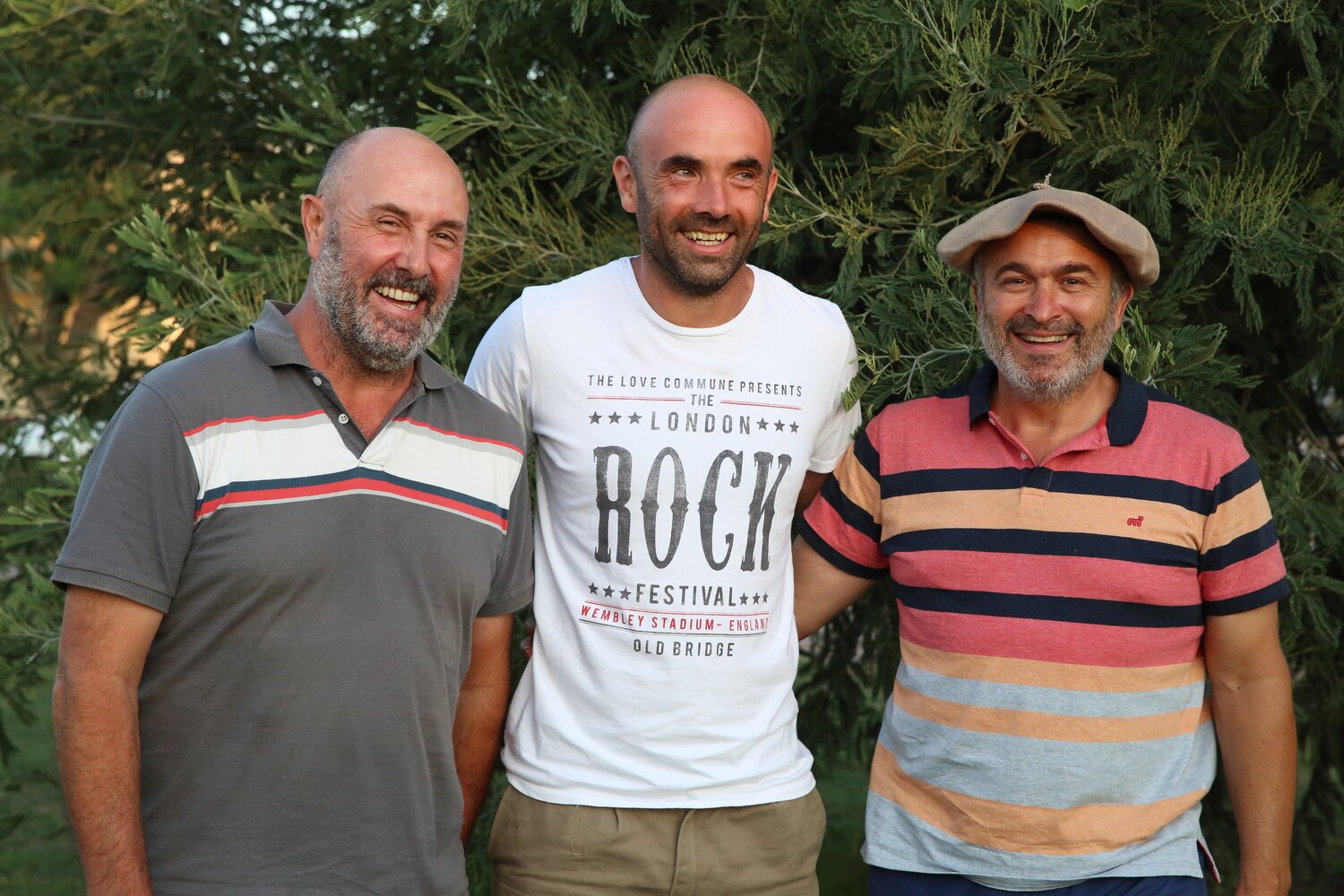
Day 3: We met (left to right) Fabio Menvielle, Sebastian Baratcabal and Gabriel Marzialetti, three sunflower producers from AAPRESID (Civil Association for Non-tilling Agriculture) in the Carhué region, southwest of Buenos Aires Province. In a long, insightful and inspiring conversation, they told us the role sunflower plays in their lives, their present and future challenges, and their commitment to sustainably grow crops sustainably.
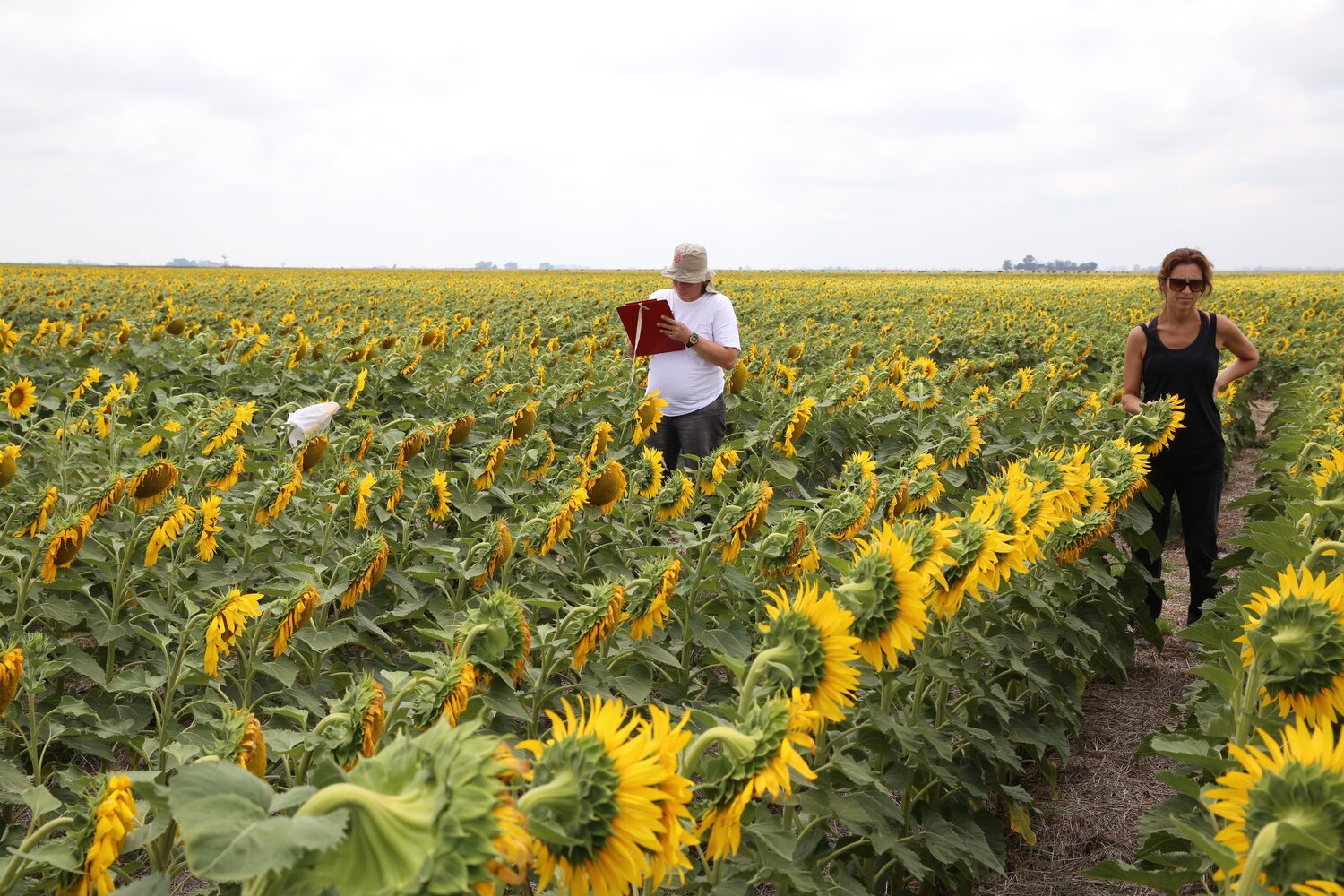
Across the Argentinian sunflower-producing regions, INTA, in collaboration with the Argentinian Sunflower Association (ASAGIR), carries out annual trials of the commercial hybrids that are sold in the local market. “The results of these trials help producers choose the best cultivars for their region,” says Carolina Troglia (left), the group leader for INTA Balcarce, who is pictured here with her colleague Carla Maringolo as they examine the trial hosted by the national seed company El Cencerro.
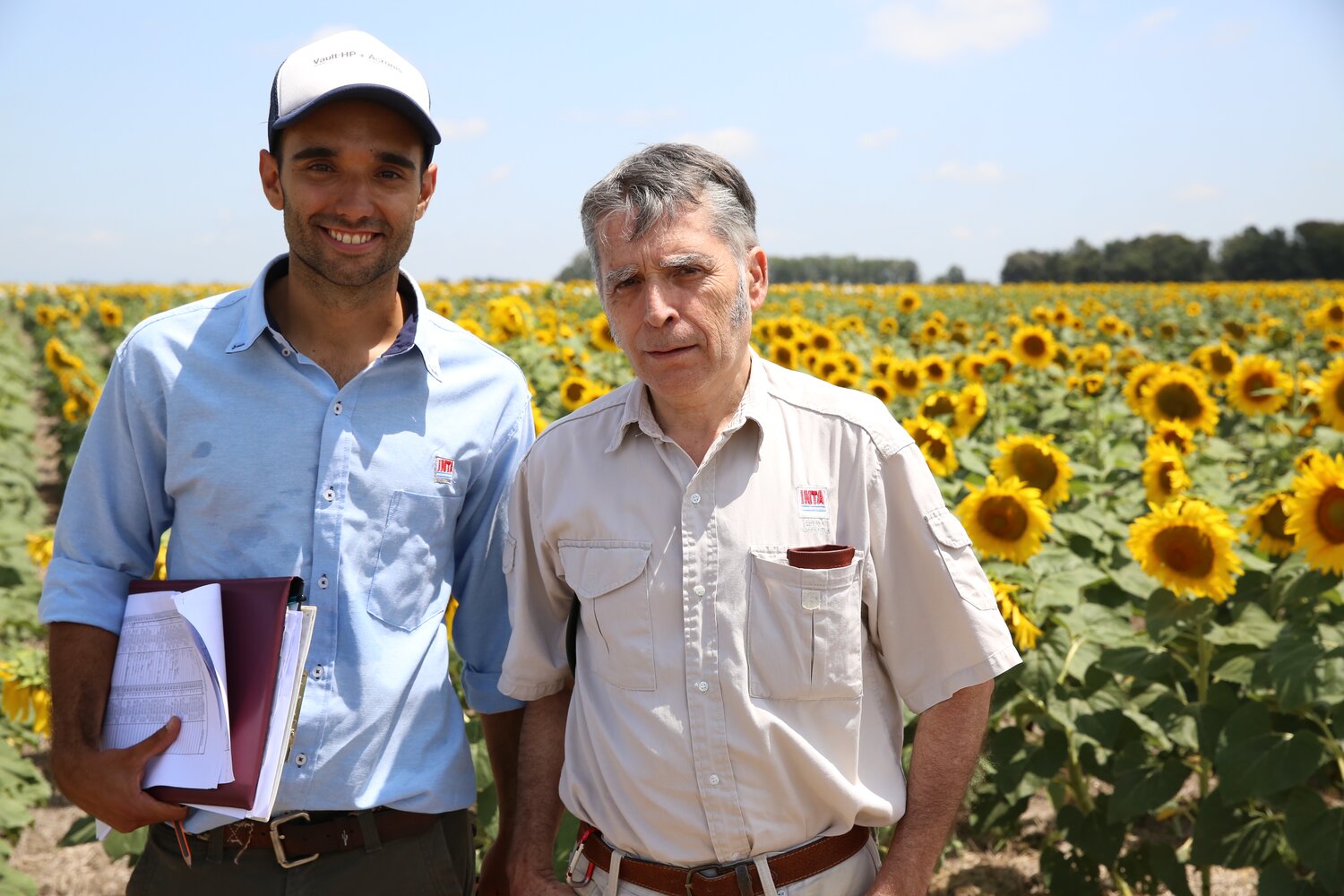
Julio Gonzalez (right) has been an INTA sunflower breeder since 1988. Throughout his long career, he has made significant contributions to the development of advanced lines, and released varieties carrying important disease resistance and oil quality traits. Julio coordinates the activities of the Technological Linking Agreement with seed companies for the development and dissemination of improved sunflower seeds. He also participates in the National Sunflower Network for the Evaluation of Cultivars (INTA-ASAGIR).
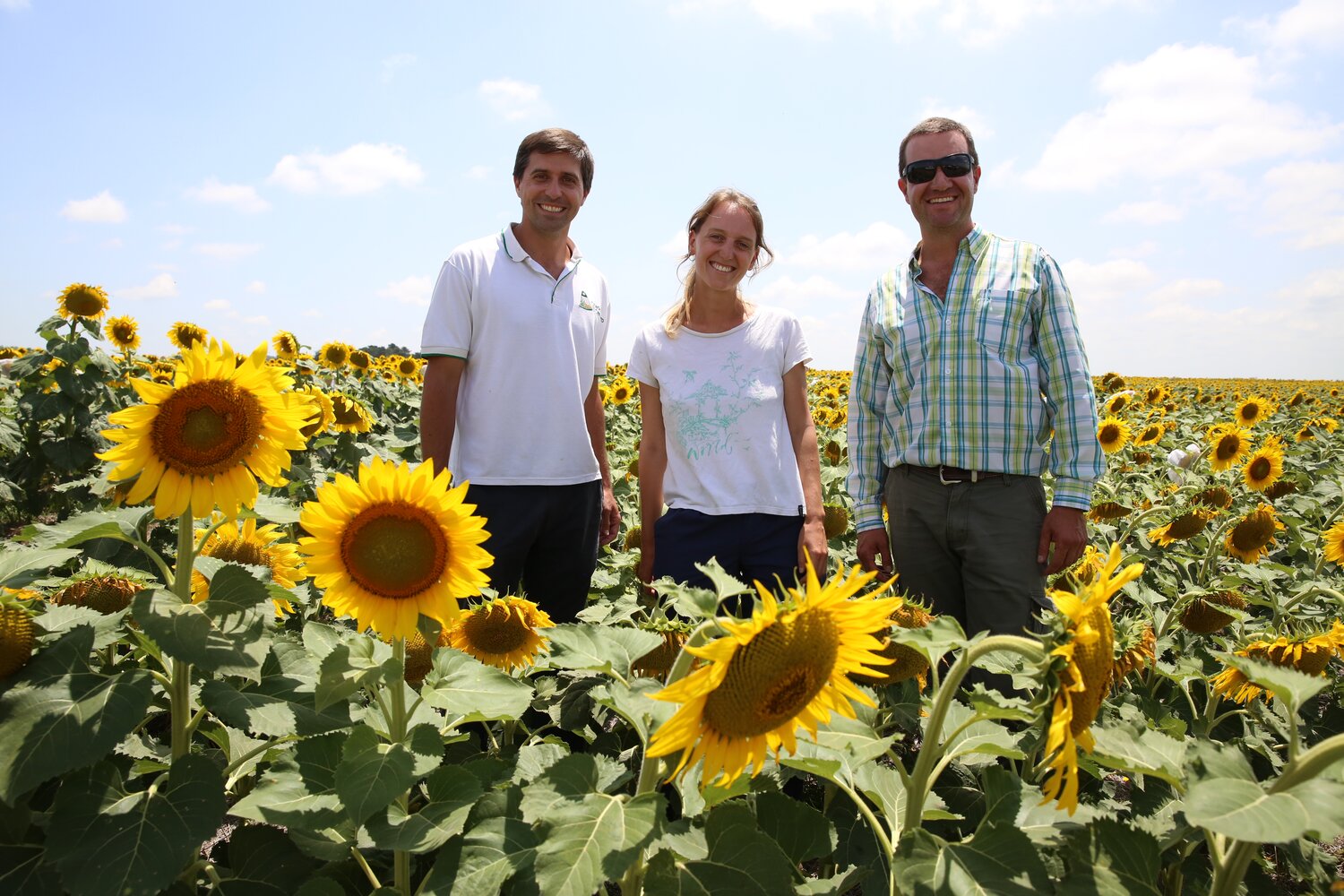
Day 3: In Coronel Suarez, we visited “El Cencerro”, a small, family-run company that has, since 1981, been developing its niche position in the highly competitive sunflower seed market. El Cencerro prioritizes research and investment in new technologies, including new seeds. It is a steadfast collaborator of INTA. Pictured left to right: Ignacio Ducos, Aldana Alonso and Alejandro Holzmann, key members of the management team.
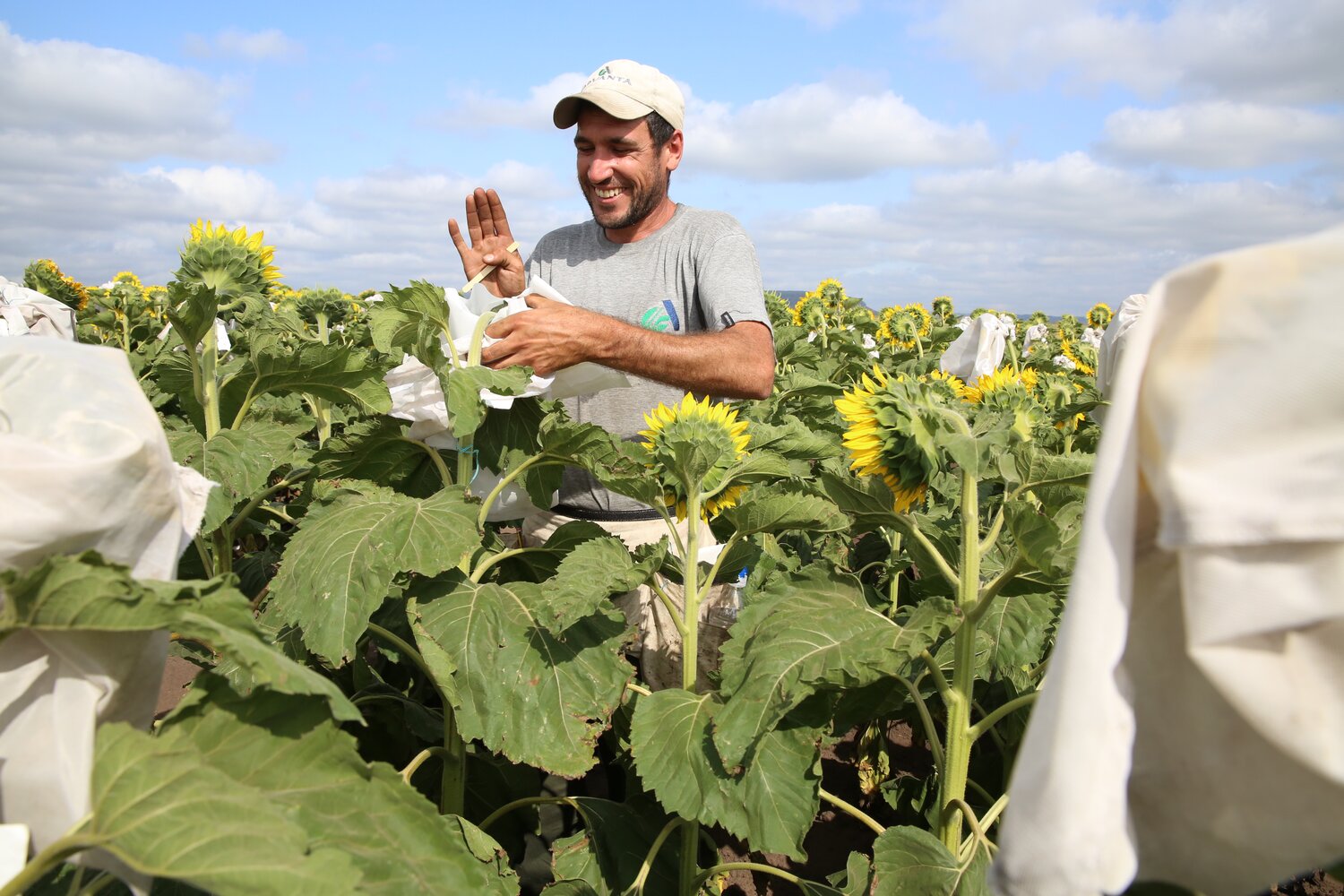
Day 2: We visited Advanta Seeds in Balcarce. For more than 40 years, Advanta’s sunflower research program has been developing hybrids that can thrive in the different agroclimatic zones of the country. The task is never ending, though, as new threats arise all the time, hence Advanta’s interest in the Crop Wild Relatives trials. In Advanta’s experimental fields, a field worker is pictured here carrying out manual crosses to develop new hybrids.
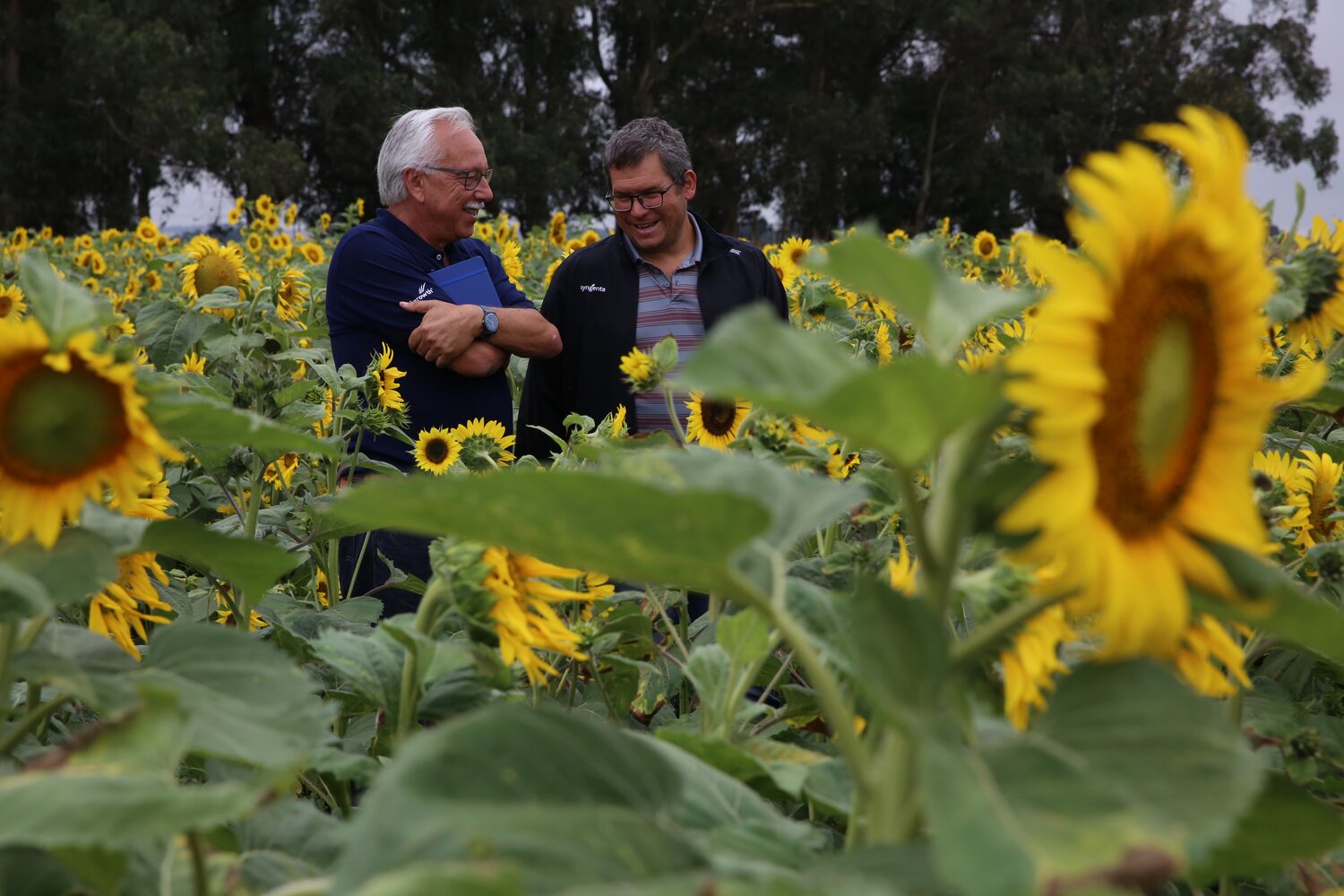
Day 2: Robert Reid (left), from Advanta Seeds, and Mariano Sposaro (right), from Syngenta, review the Crop Wild Relatives trial site at INTA’s Balcarce Experimental Station. Here, Norma Paniego and her colleagues are evaluating 222 pre-breeding lines for Verticillium resistance. Developing new, sturdier sunflower varieties is a challenge for both the public and private sector. As Robert Reid told us, “collaboration between the sectors is a must, if we are to really provide producers with new technologies that work.”
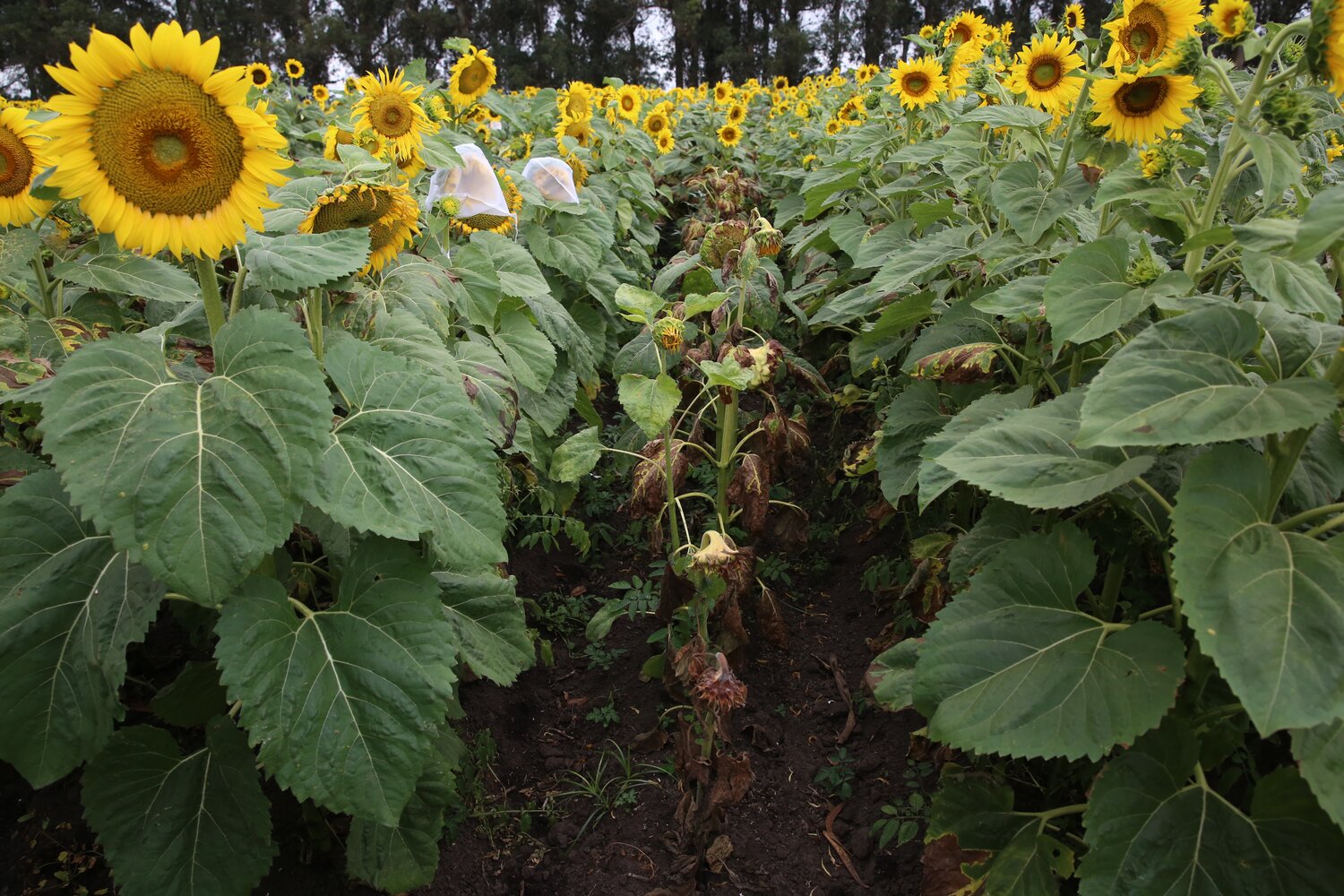
In the middle of this image, you can clearly see the damage of Verticillium wilt. The plants on either side are, to varying degrees, expressing resistance to this soil-borne fungal disease. At INTA’s Balcarce Experimental Station (450 km southeast of Buenos Aires), an extensive Crop Wild Relatives pre-breeding trial is in its second phase and is identifying lines with reduced susceptibility. Verticillium wilt has historically been a major disease of sunflower in Argentina and the USA. However, disease incidence in France, Italy, Spain, and other countries has dramatically increased recently and is becoming a major constraint to sunflower oil production.
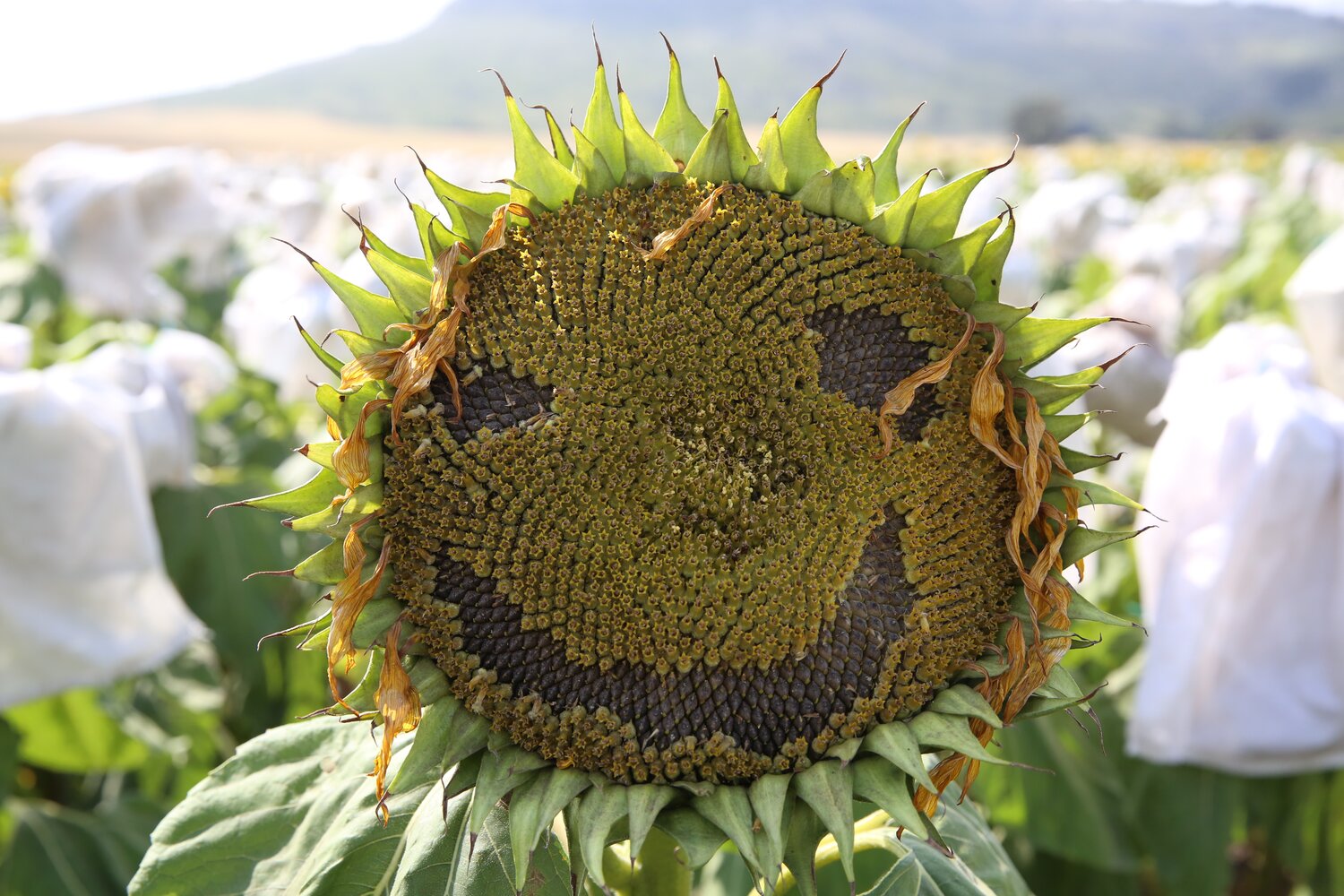
We finish this slideshow with an image and text that I tweeted out at the time: “I cannot not smile. I’m in Argentina, with folks who are passionate about using biodiversity to bring solutions to farmers, like the Crop Wild Relatives sunflower pre-breeding partners INTA, who are screening hundreds of lines to find resistance to fungal diseases.”
